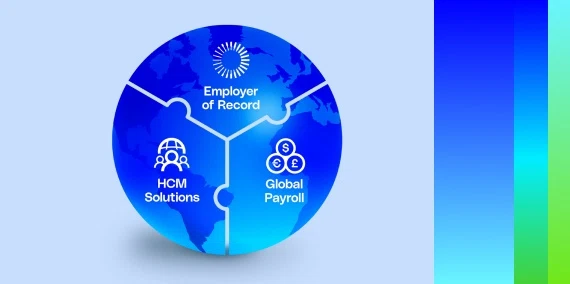Mergers and acquisitions (M&As) are often a crucial strategy for CEOs aiming to drive business growth, access new markets, or acquire innovative technologies and intellectual property. According to PwC’s mid-year outlook report, despite turbulent economic times throughout 2024, companies are turning to M&As to regain momentum and accelerate growth.
More than ever, leaders are looking to secure deals that will enhance current capabilities and consider both acquisitions and divestitures as part of that strategy. However, bridging the gap between two companies during M&As can be complex.
Chief Executive Officers (CEO), in particular, are tasked with not only driving the vision of these deals but also executing them in a way that ensures a smooth, frictionless blending of workforces across multiple geographies, cultures, and legal environments. This is where an Employer of Record (EOR) becomes a vital source of expert guidance and support.
Let’s take a closer look at how an EOR can be a game-changer for CEOs navigating global M&As.
Before the deal: key considerations for CEOs
According to Forbes, CEOs should ask the following questions before embarking on an M&A:
- What are the M&A’s objectives?
- How will the deal advance the company’s market position?
- Does the company have existing infrastructure to support M&As and team integration?
- How will value be created through the deal?
Even for executive leaders who have the answers to these questions, the reality is that the global M&A landscape is full of potential pitfalls, particularly when expanding into international markets.
Global M&A challenges for CEOs
CEOs leading global deals must navigate many obstacles to ensure success and avoid M&A integration issues down the line. As the company’s visionary leader, CEOs have to balance high-level strategic goals with the real-world realities of integrating two companies across different geographies.
Unlike domestic M&As, global deals involve varying legal systems, cultural differences, and operational structures, which must all be integrated while maintaining business momentum.
For executive leaders, the success of a merger or acquisition depends on financials and how well they can align the new workforce, manage regulatory compliance, and retain top talent.
Let’s review some of the key leadership challenges C-suite teams often face:
- Cultural integration. Merging two companies involves combining distinct workplace cultures, which can lead to friction if not properly managed. Post-merger integration challenges include misalignments in values, communication, leadership styles, or employee expectations.
- Regulatory compliance. Global expansion through an M&A exposes a company to new legal frameworks, including employment tax and payroll laws. Ensuring compliance across multiple regions is challenging, especially when a CEO has to remain focused on the macro view — ensuring deal value and smooth transitions.
- Workforce retention. Retaining key talent during and after the merger or acquisition is critical to maintaining business continuity. The M&A process can often create uncertainty among employees, causing top talent to leave if each step is not handled carefully.
- Speed of integration. The success of M&A deals often hinges on how quickly and smoothly leaders can integrate the two companies. Delays during key transitions or compliance issues can lead to operational disruptions that negatively impact the newly merged company.
These challenges highlight the need for an agile, compliant, and effective solution — such as an EOR — to streamline workforce integration during M&As.
How EOR solutions empower CEOs during global M&As
An EOR provides essential support throughout global M&As, making it easier for executive leaders to overcome the operational and compliance hurdles that come with cross-border deals. Here’s how:
- Takes on the administrative burden. EORs act as the legal employer on behalf of the company, managing the hiring, payroll, and compliance processes for businesses as they expand across borders. This allows the C-suite team to focus on high-level strategic goals while ensuring the best transition experience for employees.
- Manages compliance across borders. An EOR handles the intricacies of country-specific, evolving compliance requirements, assuring adherence to all laws and legal obligations. This mitigates the risk of costly fines or delays caused by noncompliance, allowing executives to focus on the larger vision of the M&A deal.
- Streamlines talent management. EORs provide stability during change and uncertainty by ensuring employees are onboarded smoothly and compensated correctly during transitions. This minimizes disruption and builds trust — an essential factor in all successful mergers and acquisitions.
- Offers scalability. EORs enable companies to expand rapidly without the costs and lengthy process of setting up entities in every country. This scalability is critical during mergers and acquisitions, as flexibility is needed to respond quickly to changing market conditions.
- Redirects focus to core objectives. By partnering with an EOR, leaders can delegate the operational aspects of managing multiple legal structures across locations. This allows teams to focus on the strategic elements of the M&A, such as aligning corporate culture and driving innovation.
Driving financial value and operational success of M&As with an EOR
CEOs looking to maximize the success of their M&A deals should consider the financial and operational advantages of leveraging an Employer of Record, including cost efficiency, faster market entry, and operational continuity:
- Cost efficiency. Establishing legal entities in multiple countries is time-consuming and costly. An EOR allows companies to bypass entity setup, significantly reducing overhead expenses related to workforce integration.
- Faster market entry. With the guidance and support of an EOR partner, executive leaders can onboard employees in new regions starting in just minutes, accelerating time to market and ensuring the merged company is operational as soon as possible. Without an EOR, this process could take months.
- Operational continuity. By leveraging the expertise of an EOR to handle the administrative burden of hiring and managing international employees, C-suite leaders are assured that operations continue without interruption. The EOR streamlines everything from onboarding and payroll to benefits management, allowing the leadership team to focus on high-impact strategies and execution.
Partner with G-P for your next global M&A.
By offering a unified solution for global workforce integration, compliance, and talent management, partnering with an Employer of Record is essential for global M&A success.
As the recognized leader in global employment, G-P delivers industry-leading global employment products and EOR solutions backed by the largest team of HR, legal, and compliance experts so companies can hire, onboard, and manage global teams in 180+ countries – regardless of entity status.
Download our M&A playbook for executive insights and perspectives for C-suite leaders looking to drive deal value. If you’re a CEO and want to hire specialized talent or enter new markets quickly and compliantly as part of your global business strategy, contact us or book a demo.











